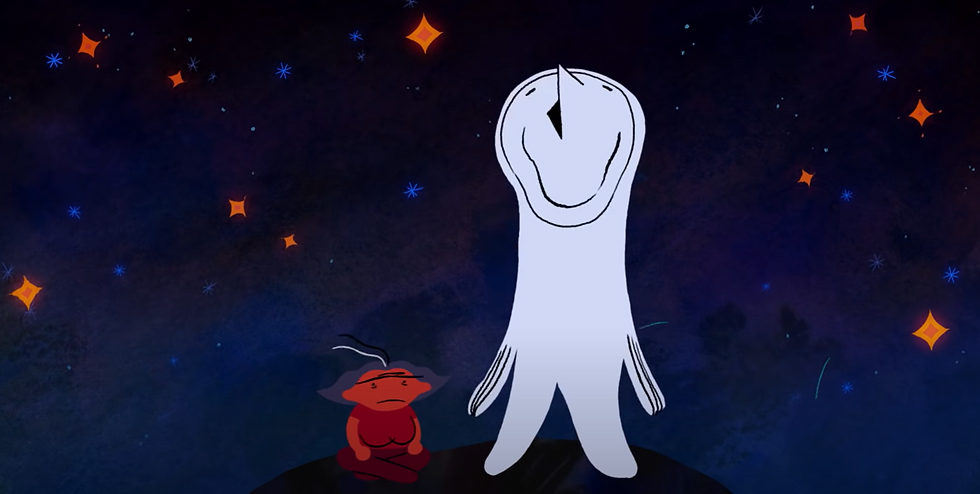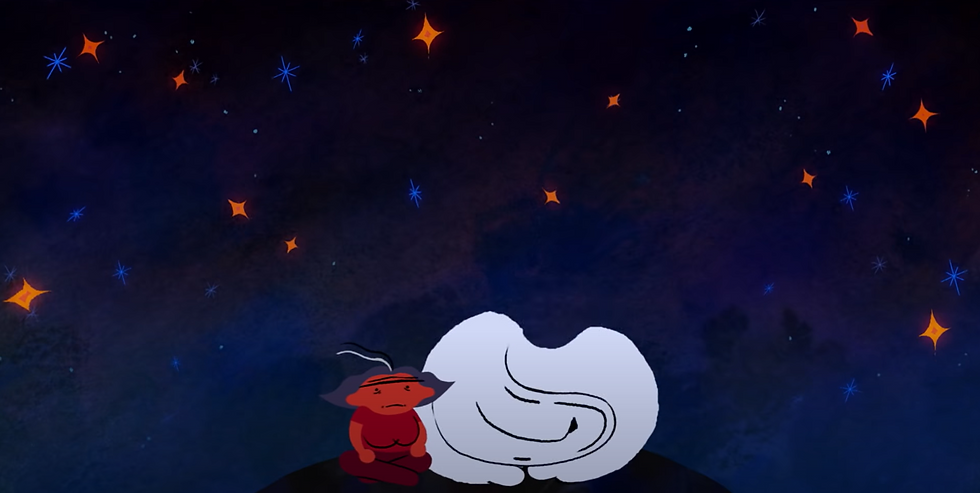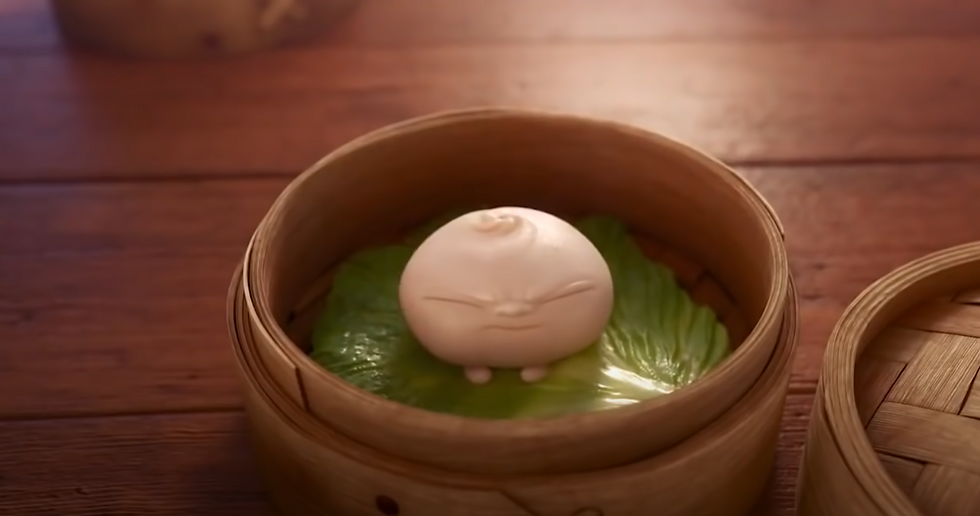Animation Principle Examples: Squash & Stretch
- kiscott8
- Jan 26, 2022
- 2 min read
by Katya Scott
Squash & Stretch in 2D Animation: Killing Time (3:39-3:45)
When Time sits beside the woman, it elongates momentarily before settling into a squashed, seated position. Its facial features morph, lengthening and moving further apart as it stretches, then widening and twisting horizontally as it squashes. The effect of the exaggerated squashing and stretching combined with the way Time's facial features twist makes it appear as if it is rearranging these features as it sits down. This emphasizes the flexibility and surrealism in Time's form that has been established throughout the film and draws a sharp contrast with the more practical nature of the woman.


Squash & Stretch in 3D Animation: Bao (0:07-0:21)
As the character sprouts arms and legs, it momentarily scrunches down in preparation to push out a new limb, then stretches up in the air as that limb is released. In the "squash" position, not only does its body squash, its eyes squeeze shut, brow coming down (as implied by the wrinkles) and mouth moving up. When it stretches, the mouth opens and the brow raises back up. These details emphasize the overall "squash and stretch" movement of the character and create an illusion of tension and release--of effort as each limb is sprouted.


Squash & Stretch in Stop Motion Animation: Kubo and the Two Strings (0:03-0:04)
As the paper character falls through the air, it stretches considerably. Upon hitting the ground, it does not squash as exaggeratedly, yet still braces itself in a kneeling position before rising. This creates an effect of solidity and stability as it strikes the ground, even after falling as such a high speed, which befits the character's role as a storytale hero.



Comentarios